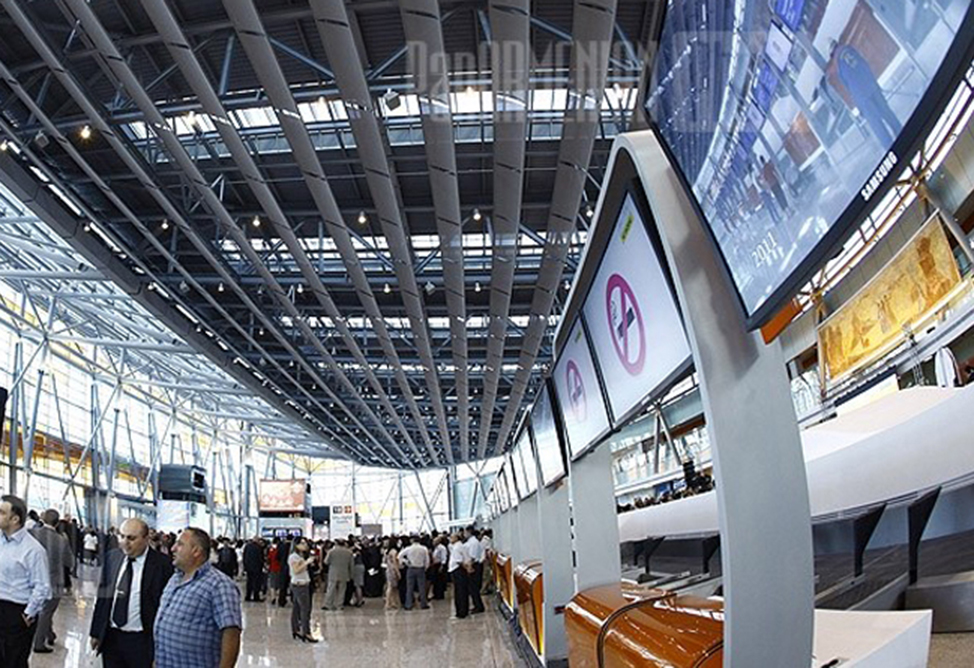Low inflation, high prices
Remarkable is that the difference between 5.7% actual consumer price index and the 4% ± 1.5% inflation rate projected in the 2011 government budget is not big.
However, everybody understands that the mounting prices, first of all, strike hard at low-income people.
Price rise in October 2011, compared with October 2010 Prices for foods (average in the country dram/kg) October 2010 October 2011 Sugar 340 479 Butter 2,783 3,402 Cheese 1670 1997 Vegetable oil 707 843 Beef 2167 2576 Eggs (10 eggs) 518 590 Source: National Statistical Service of

The table shows that sugar price leapt 40.9% in October 2011, compared with the same month a year before, butter price jumped 22.24%, cheese and vegetable prices climbed 19.6% and 19.2% respectively and beef and egg prices rose 18.9% and 13.9%, while a nominal salary was raised only by 6.7%.
Experts say causes of price hikes are different in every segment of the market.
“Money transfers coming from the outside impact price-making process in Armenia because of the lack of so-called long-money institutions and a high poverty rate here,” said Edvard Sandoyan, deputy head of Russian-Armenian (Slavonic) University and former finance minister.
He also said that high degree of monopolization at commodity markets impacts prices a great deal.
“That is why our prices go up when world prices rise, but remain unchanged when price abroad fall,” Sandoyan said.
Harutyun Mesrobyan, an expert in management, explains price rise in Armenia by the authorities’ ineffective policy.
He said that the authorities’ oligarchic mentality drives prices up, since it is known that such an increase in prices prompts some public displeasure, which, a as a rule, lasts not so long and melts away very soon.
Mesrobyan predicted at least 10% price hike in Armenia’s essential commodities markets ahead of New-Year holidays.
Armen Poghosyan, chairman of the Association of Armenia’s Consumers, is more optimistic about the matter – he projects five-to-seven-percent price rise in the country.
He pointed out two interconnected problems waiting for their solutions – control over prices and monopolies.
Gagik Minasyan, chairman of National Assembly’s finance and budgetary committee, says in order to have a better idea of prices behavior it is necessary to find out the level of monopolization of specific markets and also to track down the behavior of prices of goods in countries of origin.
According to Armenian antitrust commission’s latest figures, monopolization at the country’s sugar market reached 99.9% in 2010 (one company’s dominance).
Index Mundi data show that sugar price fell 2.37% at world markets in October 2011, while in Armenia it soared 10.9%.
Experts say reforms implying establishment of institutions of absorption of foreign income of the population and demonopolization of trade markets would deter prices from rising.
However, now the number of poor people keeps rising in Armenia amid the growing prices for essential commodities and fears that poverty may reach a frightening rate here.
According to latest statistical reports, penury rate rose from 8.2% in 2008 to 35.8% in 2010.
Extremely poor people constituted 3% (1.4% increase) and very poor people 21.3% (8.7% increase) of the country’s population in 2010.
The lack of statistical data on preferences among various social categories of consumers and volumes of consumed commodities makes it difficult to carry out a precise calculation, but it can be easily assumed that low-income people in our country can’t afford all the 470 goods and services included in the minimum subsistence basket, on which consumer price index is gauged.
Poor people in
|
Expected consumer price index (%) |
|
|
Some 100 people have been questioned by ARKA News Agency about consumer price index and their inflation outlooks.
As we see, 5% of the questioned people projected that the consumer price index increase would reach 20% by the end of this year, 53% of the surveyed people thought that average annual consumer price index would be between 10% and 15% this year, 29% of respondents believed that price rise would be between 5% and 10%, and 7% were more optimistic - they projected 5% increase in prices. ($1= AMD 382.36). -0-
David Manukyan – ARKA News Agency’s Analysis Division




